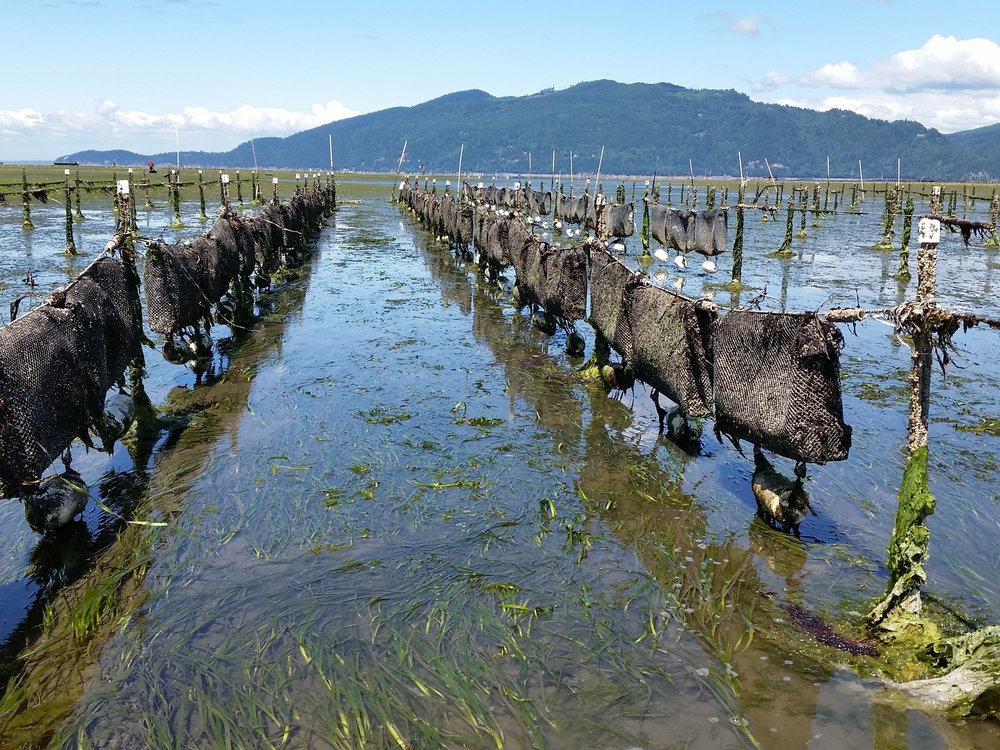Table of Contents
How To Start An Oyster Farm
Some growers use their grounds for the production of Manila clams or the extremely large Geoduck clam, which takes a great deal of work to produce but has a very lucrative return in the marketplace.
A major innovation in the Pacific industry was that of “remote setting”. This is essentially a logical division of labor between the technical work of the hatchery and the more available labor of the grower. In remote setting, the hatchery concentrates on producing larvae which are shipped to the grower who uses them in the setting operation. The key factor in the success of remote setting was the finding that oyster larvae close to setting could live for several days out of water and that, during that time, they would cease developing.
Kept cool and damp, they could then be shipped hundreds of miles from the hatchery. This allowed hatcheries to use their technically trained staff for maximum larval production while the growers used field crews for the bagging, setting, and nursery operations.
Your state shellfish sanitation control agency is responsible for classifying waters as to their appropriateness for harvesting oysters for consumption. Raising oysters in “other-than-approved” waters is not advised because they will accumulate bacteria and viruses that could cause illnesses.
Even pristine waters can contain bacteria that can cause illnesses at certain times of the year. The website for the Interstate Shellfish Sanitation Conference (www.issc.org) contains information on shellfish safety and provides the contact information for state shellfish sanitation control agencies. For more information on the health implications of oyster culture, see SRAC Publication No. 4902, “Shellfish Handling Practices—Shrimp and Molluscs.”

Site evaluation
If oyster gardening is a legal pastime in your area, the next step is to determine whether your gardening site is conducive to raising oysters. To evaluate a potential site, consider water salinity, water depth, site exposure, dissolved oxygen, and food availability. The presence of wild oysters at your site is a good sign that your location will support your gardening activities. Additional information can be found in SRAC Publication No. 432, “Cultivating the Eastern Oyster, Crassostrea virginica.”
Salinity
The salinity of the water at your site will influence the growth rate of your oysters and whether they may become exposed to oyster-specific diseases. Generally, oysters require water salinity of at least 8 parts per thousand (ppt). The higher the salinity, the faster oysters grow.
Water salinity is measured as grams of salt per liter of water, or ppt. You can measure salinity at your location using inexpensive equipment such as a hydrometer, which can be found at pet stores that sell saltwater fish. It is a good idea to keep records of the salinity at different times of the year, under varying environmental conditions (for example, after a rainfall), and at different tidal cycles. This could help you make decisions about your oyster gardening activities.
There are two diseases specific to oysters than can have a devastating effect on your crop, though the diseases do not affect humans. Both diseases are caused by protozoans.
The first is MSX (Haplosporidium nelsoni), and the second is Dermo (Perkinsus marinus). MSX organisms cannot live in salinities below 10 ppt. In fact, the pathogen can be completely eliminated from infected oysters if the oysters are held in salinities below 10 ppt for 2 weeks. Dermo can survive in salinities below 10 ppt, but it will not kill oysters at that level. Should the salinity level rise above 10 ppt, Dermo can become quite deadly to oysters.
Click here for a complete guide to raising oysters…
Article Related Questions:
- How much does it cost to start an oyster farm?
- How much money do Oyster farmers make?
- How long does it take to grow an oyster?
- Is oyster farming hard?
- Can you grow oysters at home?
- What does an oyster farmer do?
